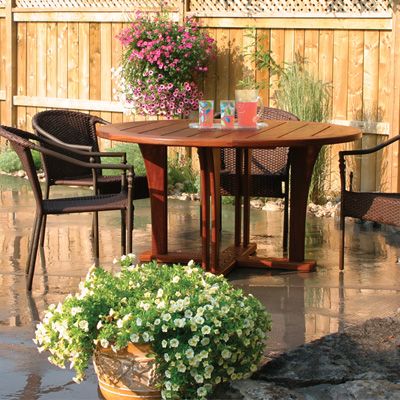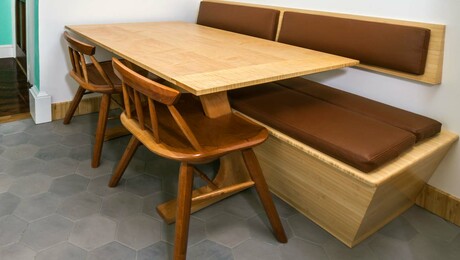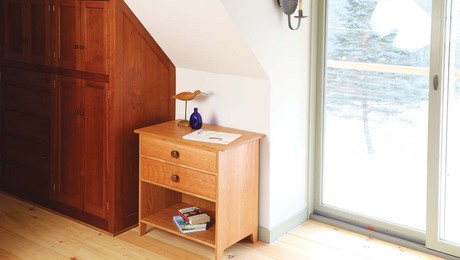Durable Outdoor Table
Ipe table will seat six and weather many seasons
Synopsis: David Bedrosian made this outdoor table from ipé to match the deck outside his home and because he likes the Brazilian hardwood’s rich color, dimensional stability, and natural resistance to decay. This 5-ft.-dia. table seats six. The top is made of boards surrounded by an round outer frame constructed from 12 thicker segments. Gaps between the boards allow water to drain and lighten the look of the top. Gently curved legs attach to the base with mortise-and-tenon joints. An oil finish highlights the wood.
Last summer brought a new pool to our backyard. With it came more company and the need for a better outdoor table. Rather than purchasing something mass-produced, I designed a table to match the wooden deck that completes our backyard landscaping. Both the deck and the table are built from ipé (pronounced ee-pay), a dense South American hardwood. I like ipé for outdoor furniture because of its rich color, dimensional stability, and natural resistance to decay. But you could substitute white oak, cedar, or any other wood that will withstand the elements.
Ipé may not be available at the local hardwood dealer. You may have to visit a lumberyard that sells highend deck material, or you can order the ipé online. It comes in a limited number of standard dimensional lumber sizes. Although the stock sizes may be limited, ipé comes planed and ready for sanding.
The table is about 5 ft. dia. and seats six comfortably. The top is made of 5/4 by 6-in. boards surrounded by an outer ring built from 12 segments of 8/4 by 6-in. stock joined with splines. Each inner board is glued and screwed into a groove in the outer ring. Gaps between the boards lighten the look of the top and allow water to drain. The gently curved legs attach to the base with mortise-and-tenon joints. An oil finish highlights the ipé’s rich color.
When you lift the first board, you’ll notice that ipé is much denser than other woods. Although it can be jointed and planed with steel knives and light cuts, ipé is tough on tools. You must use sharp carbide blades and bits in your saws and routers. Even so, you’ll need to rout in shallow passes. The wood is difficult to handplane, but it sands to a very smooth finish. Drilling was required for the stainless-steel screws I used throughout (to prevent staining). Also, it’s important to seal all end grain or ipé will check. Take extra caution with ipé sawdust, a respiratory irritant. The oil in the wood makes the sawdust stick to walls, clothes, even the inside of dust-collector pipes. It also may stain other unfinished wood.
Because of ipé’s oily nature, both the makers of Gorilla Glue and of Titebond III, two waterproof glues that I use for outdoor pieces, recommend gluing it soon after machining or lightly sanding the surfaces of joints if there is a delay before glue-up. I glued all of the joints within a few days of machining and have not had any joint failures. I used Gorilla Glue for the joints where the squeeze-out could be removed easily and Titebond III for the others.
From Fine Woodworking #183
For the full article, download the PDF below:























Log in or create an account to post a comment.
Sign up Log in